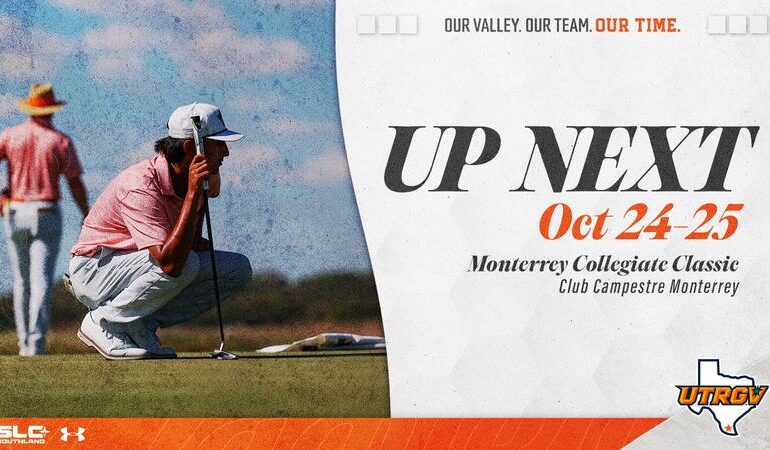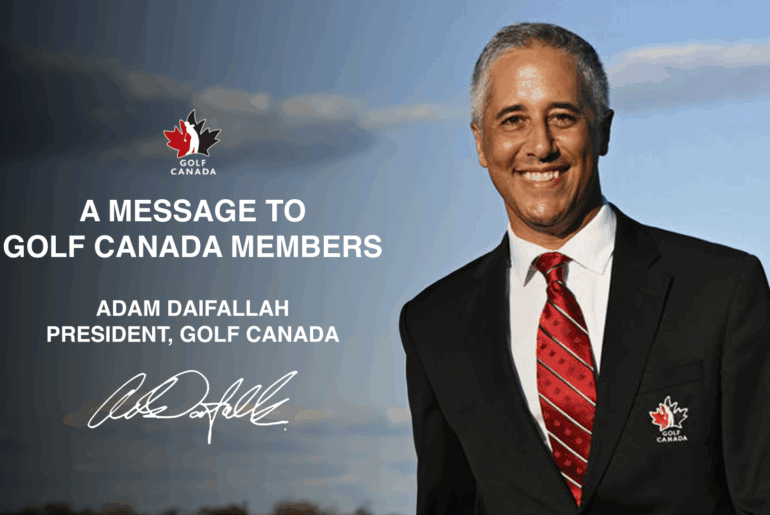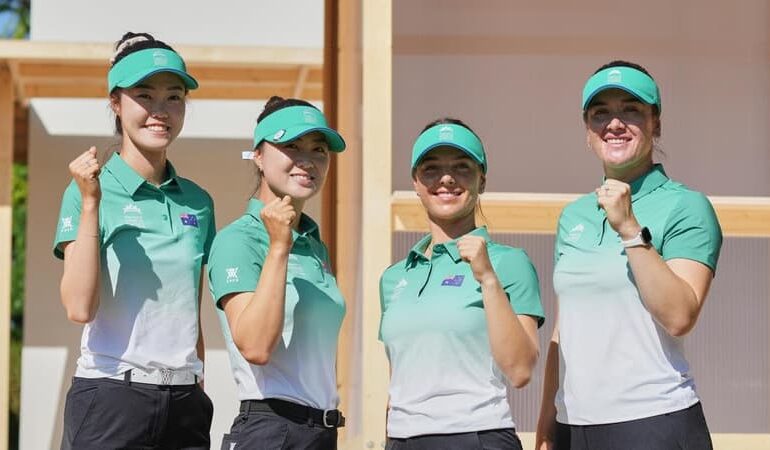James Nicholas is a professional golfer on the Korn Ferry Tour whose candor and consistency have earned him a substantial following across social media – with over half a million combined on TikTok and Instagram.
A New York native, Nicholas concluded the season 64th on the KFT points list, securing his KFT card for 2026, and also made the cut at the U.S. Open earlier this year.
This week, the 28-year-old released a full account of his 2025 finances. He then spoke with me, Gianni Magliocco, about the numbers in depth: budgeting a $4k pre-cut week that can climb to $5.8k, the role of content creation in his routine, and advice for rookies on raising the necessary initial $20–$30k.
What follows is a detailed look at how Nicholas manages everything while advancing toward a PGA Tour card.
Finances: Budgeting, Sponsors and Adjustments
Gianni: Your outgoings for 2025 were $150k. How close was that to the budget you had in mind at the beginning of the year—and what expense surprised you the most?
James: The budget I set was around $110k to $125k. That’s the normal amount you can expect to play on the Korn Ferry Tour to do it the right way. You can get host housing, you can drive 8+ hours to events, you can cut some costs here and there, but at the end of the year, it’s only going to save you about $10k. So for me, it made sense to spend the money to be a bit more comfortable.
The reason I went over budget was because of the bonus for my caddie. He gets 8% of my earnings, which came out to around $30k, so that 110-120k went to 140- 50k very quickly. But that’s something that you don’t really need to account for, because you’re making more money if he’s making more money.
I wouldn’t say it’s surprising, if you go out and make a million dollars on tour and you’re going to pay your caddie 10%, that’s $100k right there without flights, hotels, AirBNBs, dinners, sponsor events, etc. What I try to do is get a good group of sponsors that cover that fee. If you have a terrible year and make nothing on the course, then you’re still going to be in the green or at least not in the red.
Gianni: At $5.8k a week out on tour as your average expenses, what do you need to break even, and how big a thought is that when it comes to shot selection towards the end of an event?
James: It’s not going to change my shot selection. If you are pressed for money, then golf is going to get a lot harder. For me, I’ve done a really good job at social media and building my brand outside of golf so that I’ve created some income there. That way I’m never looking towards golf to pay my next credit card bill, rent or whatever else.
Going back to the weekly average, I budget $1,500 for my caddie, and I do this all pre-cut because I want to know what expenses will be before the cut. Approximately $1,200 for my Airbnb and $300 for my rental car – that’s $1,500 right there, bringing the total up to $3,000. The flights usually cost around $500, and then groceries and food around $500, to bring us up to $4,000. So that extra money you see in the budget ($5,800 per event) is the cuts I’ve made and the extra money that my caddie gets.
I’m not budgeting for that until after the cut because I’m not responsible for that until I make money, and if I do make the cut, then I’ll make money. So $4,000 is what I budget over 26 weeks that brings it out to about $110k.
Gianni: Do you think you’ll make any adjustments to your outgoings next year, or are you happy with the formula going forward?
James: I’m actually doing a YouTube video on this today. I’m going to use RocketMoney to track everything. Right now, I’m using a spreadsheet on my own, which is difficult, and I’m going to budget everything a little bit better because now I’m full status for next year. I know my schedule in November, so I can book flights through the rest of the year, which will cut my costs a ton. Also, hopefully I can play better, which will increase my margin at the end of the year.
On The Course: Schedule, Mindset, and Improving Year On Year
Gianni: You played a really full schedule in 2025. Knowing what you now know about certain venues, do you have adjustments to your schedule in mind, or is playing 26 events your sweet spot?
James: I really love doing it, but I also love being home and spending time with my wife, friends, and family, and being there for events. There’s a wedding that I have next year in Ireland that will replace an event in July. The schedule comes out next week.
Life isn’t just golf, and that’s something that I want to do a better job of going forward. That doesn’t mean skipping events all the time, it just means if there’s a six-week stretch, and I can skip something in the middle to get some rest and spend time with friends and family and be there for some events, then that’s something I want to do.
I think there’s a diminishing return when you play 6, 7, 8, 9 events in a row, and if you do take a week off you get zero points and it’s as if you missed the cut, but those next events after that break you’re going to be way more focused and ready to go, so I think you get a lot from it. That’s also something that I’m trying to convince myself because I’m one of those guys that plays every event, takes every opportunity and doesn’t want to skip because I’d feel like I’m missing out, But that’s something that I’m going to try and do going forward.
Gianni: What’s the one club in the bag that has changed your net gain for the positive the most this season?
James: I wouldn’t say it’s one club in the bag. I’ve got better every year as a pro golfer slowly. Everything is a little bit sharper. My decision making, I’m typically a very good putter, I have my hot weeks and my cold weeks, but for the most part, I usually putt the ball very well. I’m working on my short game this off-season, that’s something that I want to focus on and get my stats up on that, but it’s not one club in particular, it’s more the full process and growth of my game.
Off The Course: Investing, Content Creation, and What Rookies Need To Know
Gianni: What would be your biggest financial change if you earn your PGA Tour card, what would you invest more in or anything new, on or off the course?
James: I invest all my money in the market. I love investing. My brother is a wealth manager. I go to him and ask him questions, and he manages most of my money. He’s also a great golfer, so we play a lot of golf together and talk about it, but I find that there’s a huge opportunity out there.
If I were to get a PGA Tour card next year, I definitely want to buy a house. That’s something that my wife and I have been trying to do and saving up for, so that would be the first thing. After that, I love experiences. I love going on vacations, and traveling, and trying new things. I’m not a big material guy, I’d rather spend my money on trips and memories.
Gianni: You’ve built an amazing following on social media with hundreds of thousands following your content. How do you balance playing a full schedule and practising while being a highly proficient content creator?
James: That’s a great question and a hard one to answer. I’ve been doing content since I was about 11-years-old. I got my first GoPro when it first came out, and I would film surfing videos, skateboarding videos, all these little things growing up. So when I turned pro I was like I already do all this stuff, so I might as well do it for golf and show what it’s like to chase the dream of trying to play on the PGA Tour. So it’s been a natural transition for me, something I’ve been good at and continue to do.
It’s not hard for me, but it does take a mental toll mostly in the off-season. During the season I don’t think about it, but when I’m in the off-season I try to plan out content and higher quality content which does take a little bit of a mental toll. But during the season, it’s grab and go, I’ll film a bunch of stuff because I want to see my swing and create pressure.
A lot of videos that I do like those 9-hole videos, let’s play a hole or this and that, whenever I film I have a rule that I have to post what I film, and that’s created this pressure situation. I don’t want to film myself making a ten or five bogeys in a row or shooting 75.
In my most recent video I just posted I shot one-over for 9 holes, and I was kind of pissed after it. I was like ‘Dang it I just 3-putted the last hole to shoot 1-over,’ and that’s helped my mentally in my golf game, because If I were just to film and then post what I wanted it doesn’t create any sort of pressure. I know that’s what most creators or influencers do out there, but I’m not an influencer, I’m a professional golfer first and foremost, and this is just something that I do on the side.
Gianni: One budgeting piece of advice you’d now give a rookie?
James: First and foremost, you have to find some sponsors.
If you’re coming out of college, high school or wherever, and turning pro, you have to go to your club where you grew up and try to raise some money. Go to the members that you know, to the people in your life, and be like Hey, guys, I’d love to put a logo of your company, or if you could give me some money to get started at Q-School, that’s the biggest thing. You don’t need $120k a year unless you have status, and if you have status you’re probably going to make a lot of money.
The first thing you need is to go and raise $20-30k to put yourself through Q-School. Set yourself up at a club, if you’re in Europe, Spain or somewhere warm. I know in the UK it doesn’t snow a ton, but you’d rather be somewhere a little bit warm so you can practice during the wintertime. In the states, it’s typically Florida, Arizona, or Texas.
You don’t need to raise that whole lump sum right away. Once you get your card then you can start going to companies that you like and brands that you align with. Try and grow your social presence, that way they can see the positives for them. Then, through that, now you’re financially stable, and you don’t have to worry about making the cut just to pay a check. Instead, you can worry about getting points and climbing up the points list.
So for me, finding that first $20-30k when you’re starting out and turning pro, that way you can get through Q-School, and after that it’s on you. You can build your brand and start marketing yourself through social media, you can play mini-tours, you can invest in the market. You can do all these things to make your game and career a little bit easier, and to not have to fully rely on your performance on the course to make money.
Your Reaction?LIKE1LEGIT0WOW0LOL0IDHT0FLOP0OB0SHANK0








